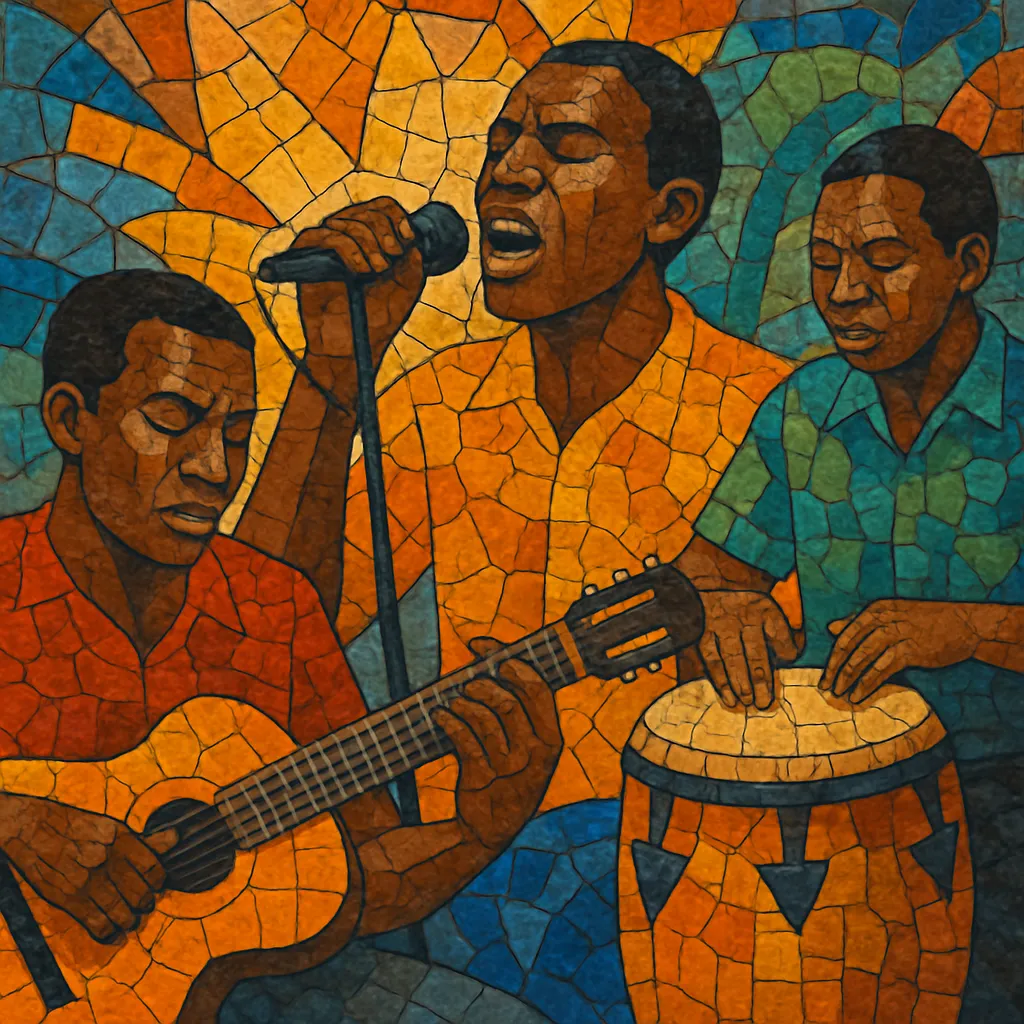Benga is a fast, guitar-driven popular music from Kenya, best known for its bright, cascading lead guitar lines and propulsive dance grooves. The lead guitar often emulates the interlocking patterns of the Luo nyatiti (eight‑string lyre), resulting in a sparkling, melodic style that sits on top of a crisp rhythm section.
Typically set in 4/4 and at upbeat tempos, benga songs feature call‑and‑response vocals, short lyrical refrains, and tightly interwoven guitar parts. Lyrics address love, everyday life, humor, and social commentary, delivered in Dholuo, Kikuyu, Kamba, Swahili, and English depending on the regional variant.
While its core comes from local folk idioms, benga was shaped by the pan‑African guitar band movement, absorbing ideas from Congolese rumba/soukous and, to a lesser extent, highlife—yet preserving a distinctly Kenyan rhythmic feel.
Benga crystallized in the 1960s around Nairobi and western Kenya, especially among Luo musicians who translated nyatiti lyre patterns to the electric guitar. Early bands refined a bright treble lead, a steady 4/4 pulse, and call‑and‑response singing. Urban dance halls and radio supported the style’s rise as it distinguished itself from imported pop and Congolese dance bands.
Through the 1970s and 1980s, benga became a dominant dance music in Kenya. Pioneers such as D.O. Misiani and George Ramogi defined the Luo sound, while Kikuyu and Kamba artists (e.g., Joseph Kamaru, Kakai Kilonzo) localized benga with language‑specific lyrics and rhythmic inflections. Independent labels and live circuits allowed bands to tour widely across East Africa, strengthening benga’s cross‑border appeal.
Kenyan stages regularly hosted Congolese bands, and local guitarists absorbed the fluid sebenes and harmonies of rumba/soukous. In turn, benga’s needle‑sharp lead guitar and brisk grooves influenced neighboring scenes, especially Zimbabwe’s sungura and parts of Zambia. The exchange kept arrangements evolving—more polished basslines, longer instrumental breaks, and tighter horn or guitar hooks.
From the 1990s onward, benga faced competition from urban pop, hip hop, and electronic styles, yet it persisted through regional stars and a roots revival on festivals and recordings. Modern productions may add synths, cleaner drum kits, and pop song forms, but retain hallmark guitar figures and dance‑floor energy. Archival reissues and global interest have further cemented benga as a cornerstone of East African popular music.


